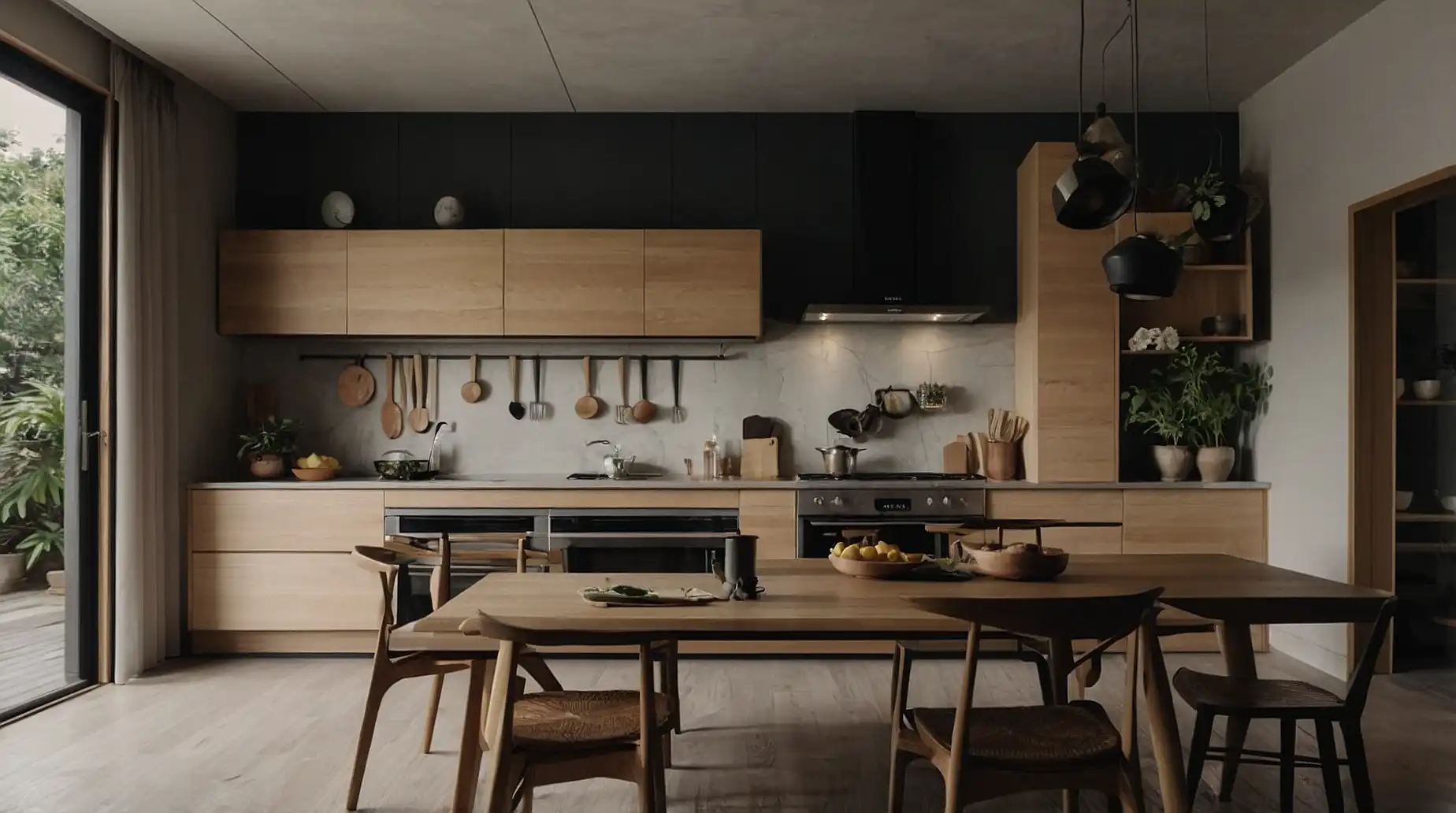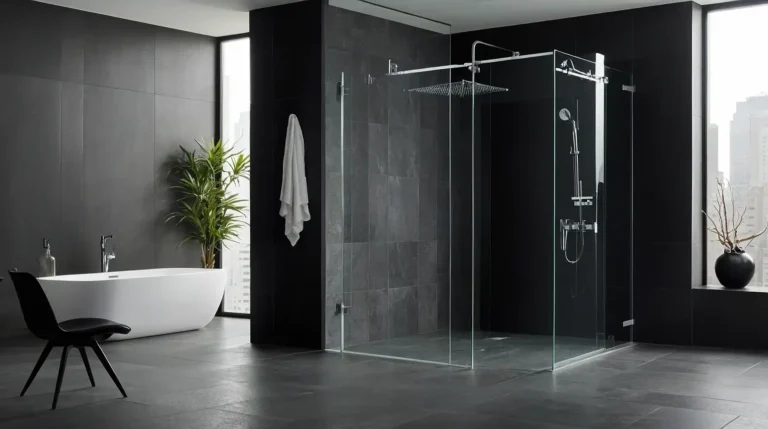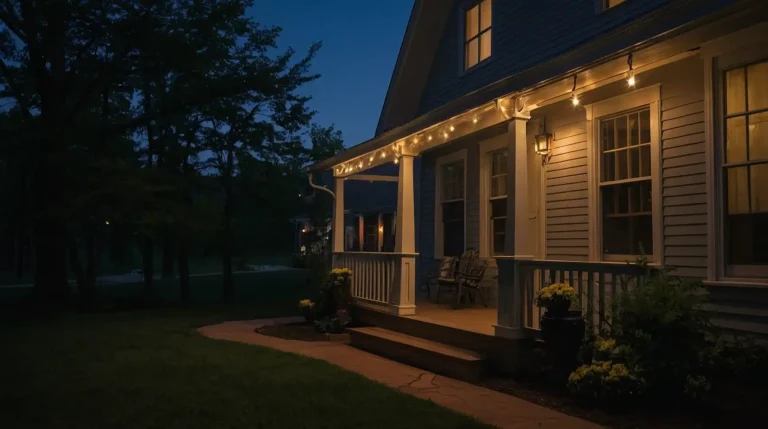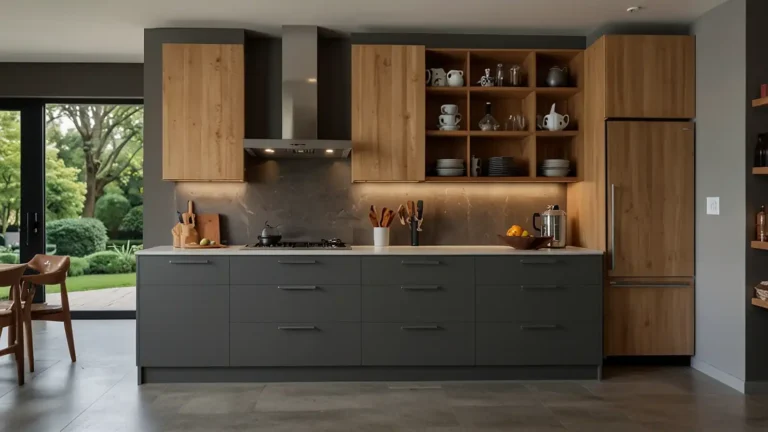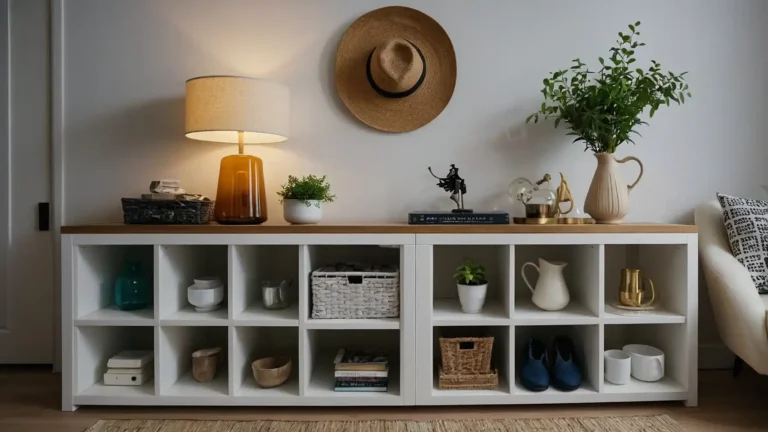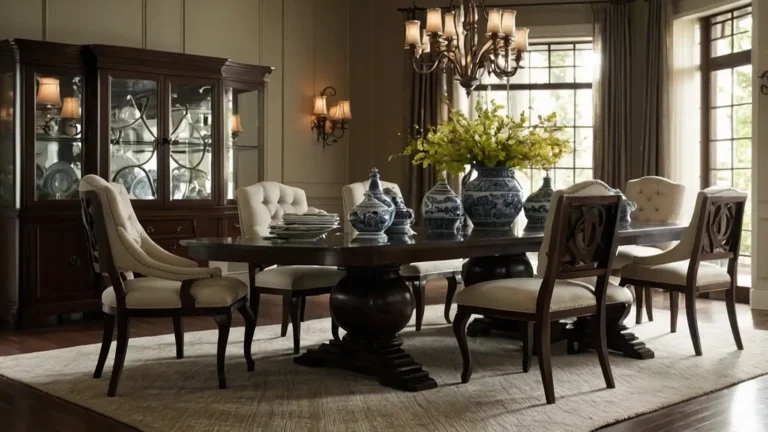27 Japandi Kitchen Designs and Ideas
Japandi kitchens blend Japanese minimalism with Scandinavian warmth perfectly. This style creates serene cooking spaces that prioritize function and natural beauty.
You’ll discover how clean lines meet organic materials beautifully. Every element serves a purpose while maintaining visual harmony.
These designs celebrate simplicity without sacrificing functionality. Your kitchen becomes a peaceful sanctuary for mindful cooking and gathering.
1: Handle-less Cabinet Design
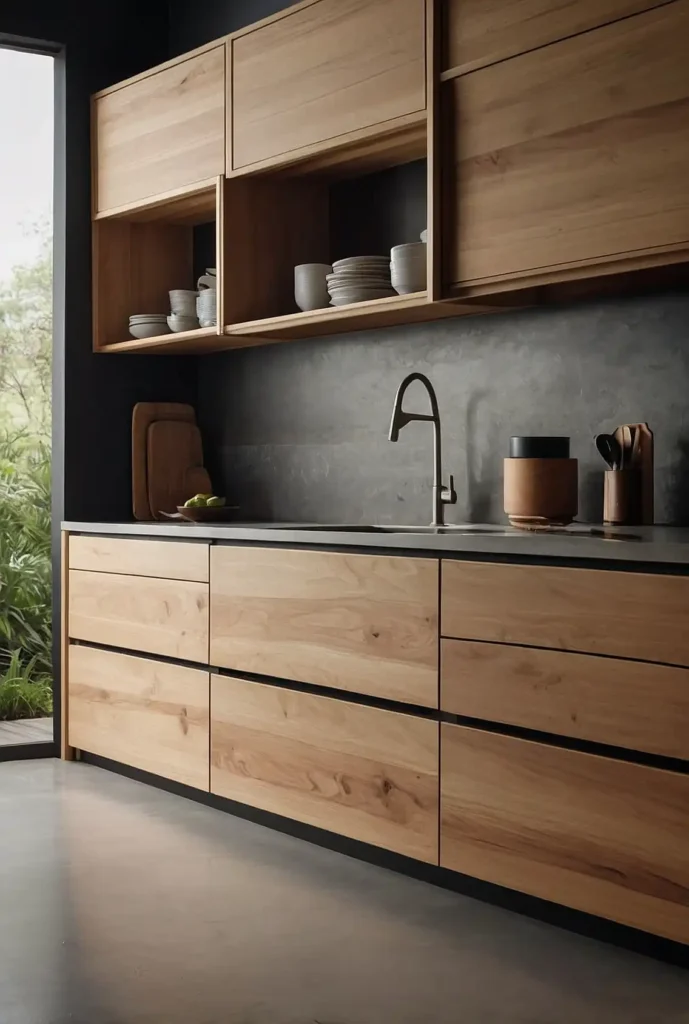
Install handle-less cabinets with push-to-open mechanisms for seamless surfaces. You’ll create clean, uninterrupted lines that define Japandi aesthetics perfectly.
Choose light wood or matte white finishes for authenticity. The absence of hardware maintains visual simplicity throughout your space.
This approach reduces visual clutter while improving functionality. Your cabinets become architectural elements rather than just storage solutions.
2: Natural Wood Cabinetry
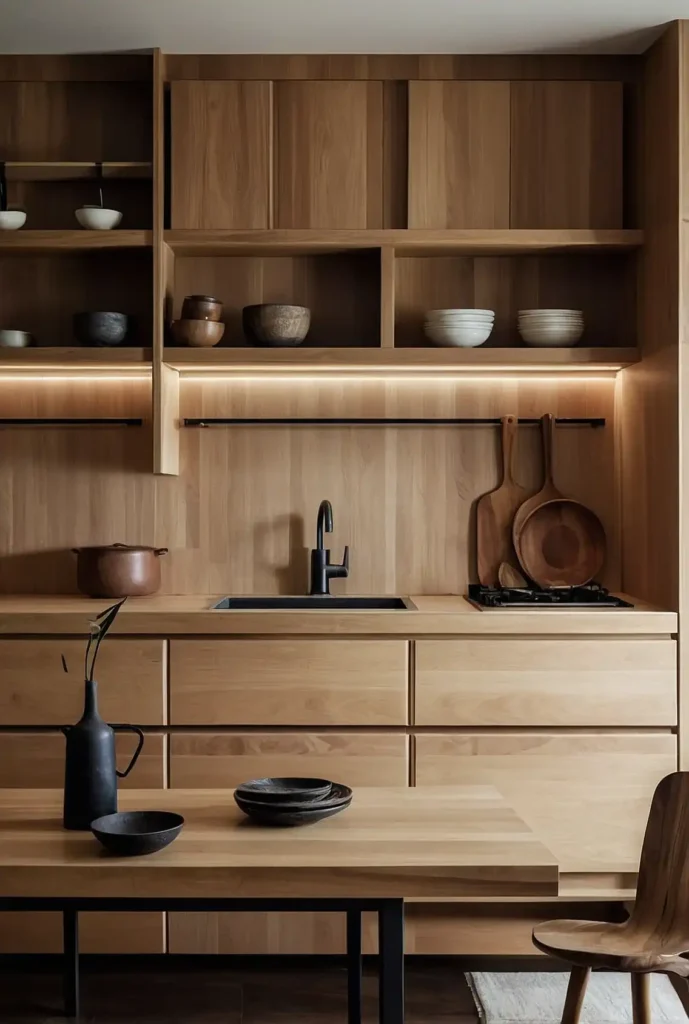
Select light oak or birch cabinets with visible wood grain. You’ll bring Scandinavian warmth while honoring Japanese appreciation for natural materials.
Choose wood with minimal knots for clean, consistent appearance. The natural grain adds subtle texture without overwhelming your design.
Finish with clear protective coating to preserve beauty. These cabinets age gracefully while maintaining their organic appeal.
3: Stone Countertop Serenity
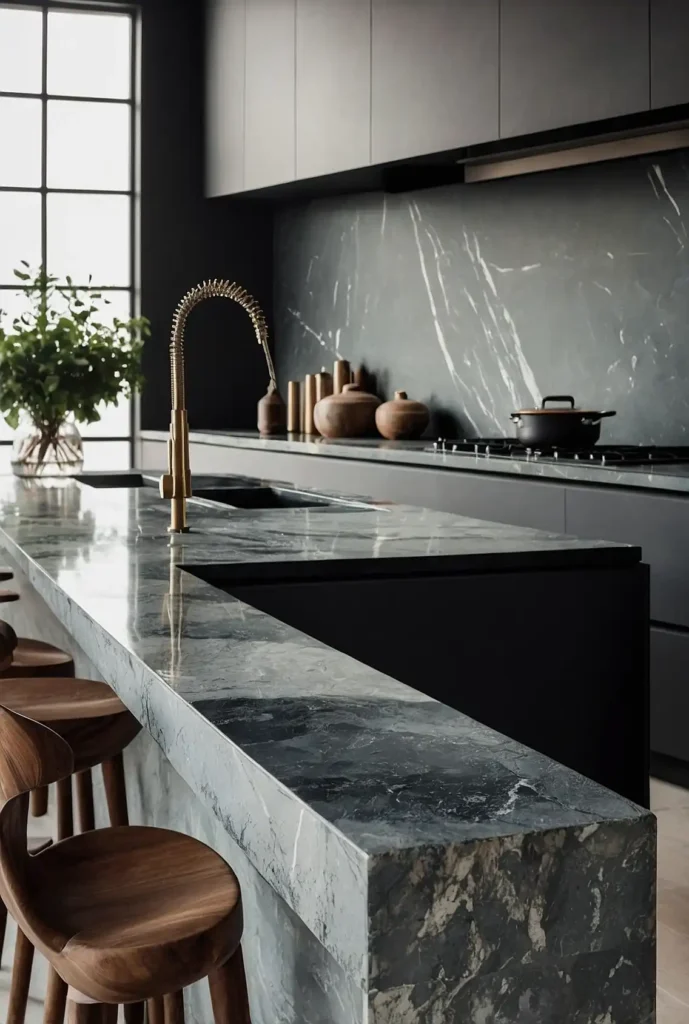
Install natural stone countertops in white or light gray tones. You’ll create durable surfaces that connect your kitchen with earth’s beauty.
Choose marble, granite, or quartz with subtle veining patterns. The natural variations add interest without disrupting visual calm.
These surfaces handle daily cooking while maintaining elegance. Your countertops become both functional and meditative design elements.
4: Open Shelving Display
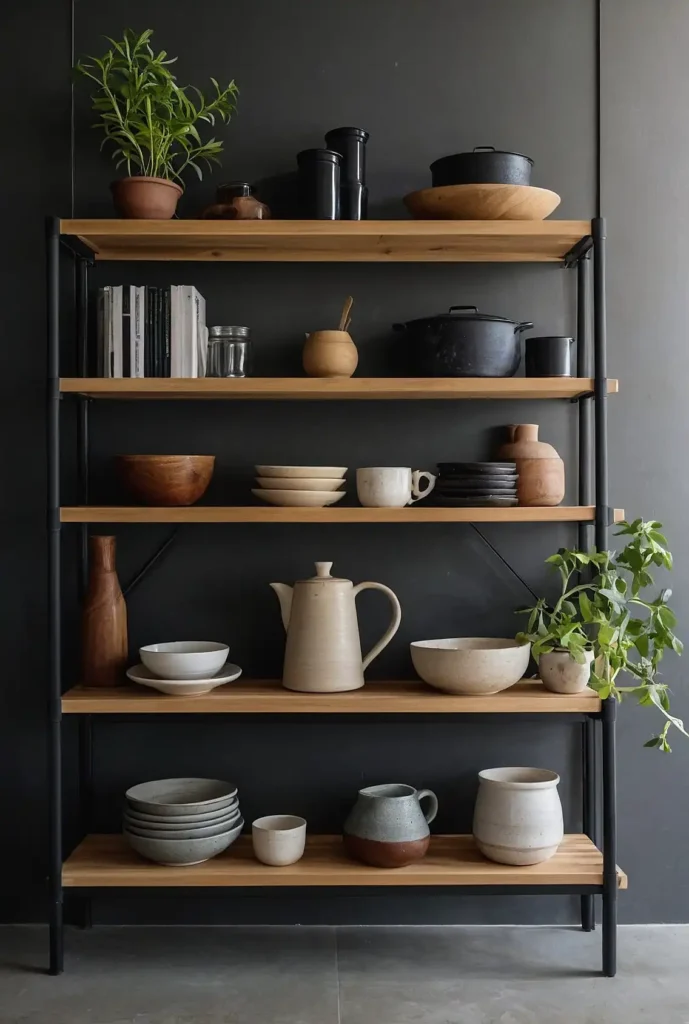
Replace upper cabinets with floating wooden shelves for airy openness. You’ll display beautiful dishware while maintaining minimalist principles.
Arrange items with intentional spacing between each piece. Choose neutral ceramics, wooden bowls, and glass containers for cohesion.
This approach encourages mindful ownership of kitchen items. Your daily dishes become part of the decorative scheme.
5: Minimalist Pendant Lighting
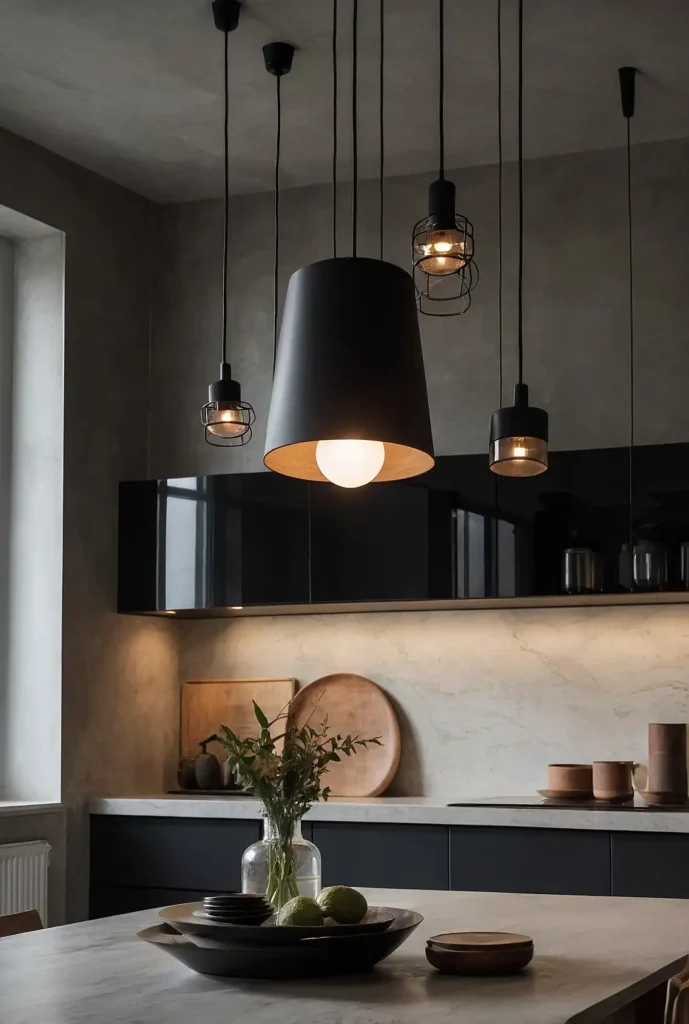
Hang simple pendant lights with clean geometric shapes overhead. You’ll provide task lighting while reinforcing Japandi design principles.
Choose fixtures in natural materials like wood, paper, or ceramic. The simple forms complement your uncluttered aesthetic perfectly.
Position them over islands or dining areas strategically. These lights become sculptural elements when not illuminated.
6: Neutral Color Foundation
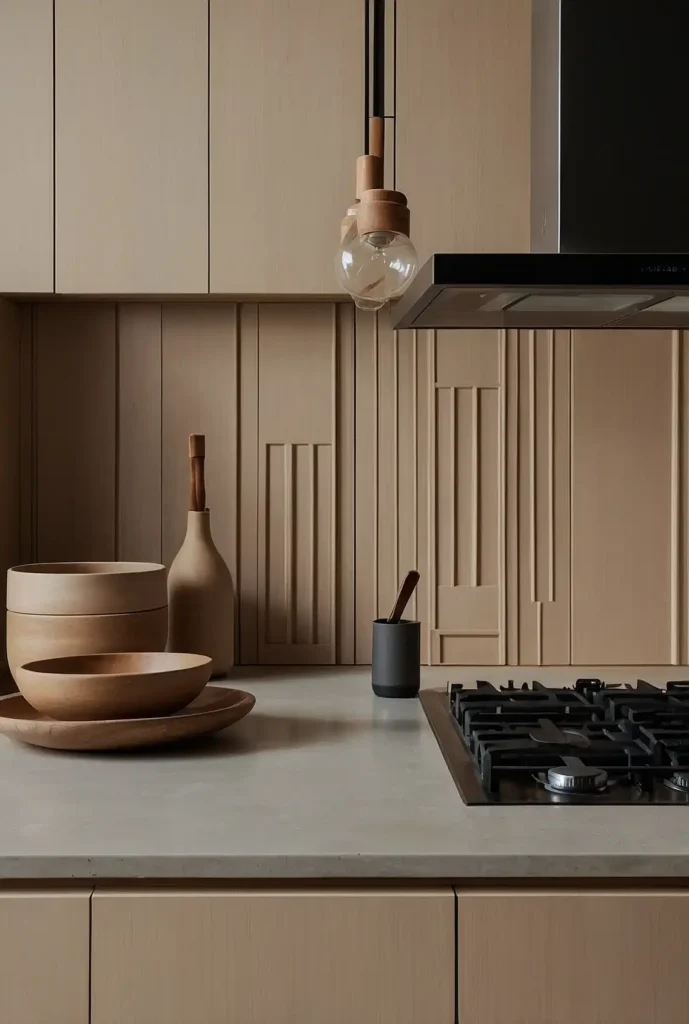
Build your kitchen around whites, beiges, and warm grays. You’ll create a calming palette that promotes peaceful cooking experiences.
These colors reflect light and make spaces feel larger. They provide the perfect backdrop for natural wood accents.
Avoid bold or bright colors that disrupt harmony. This restrained palette supports the meditative quality of Japandi design.
7: Hidden Appliance Integration
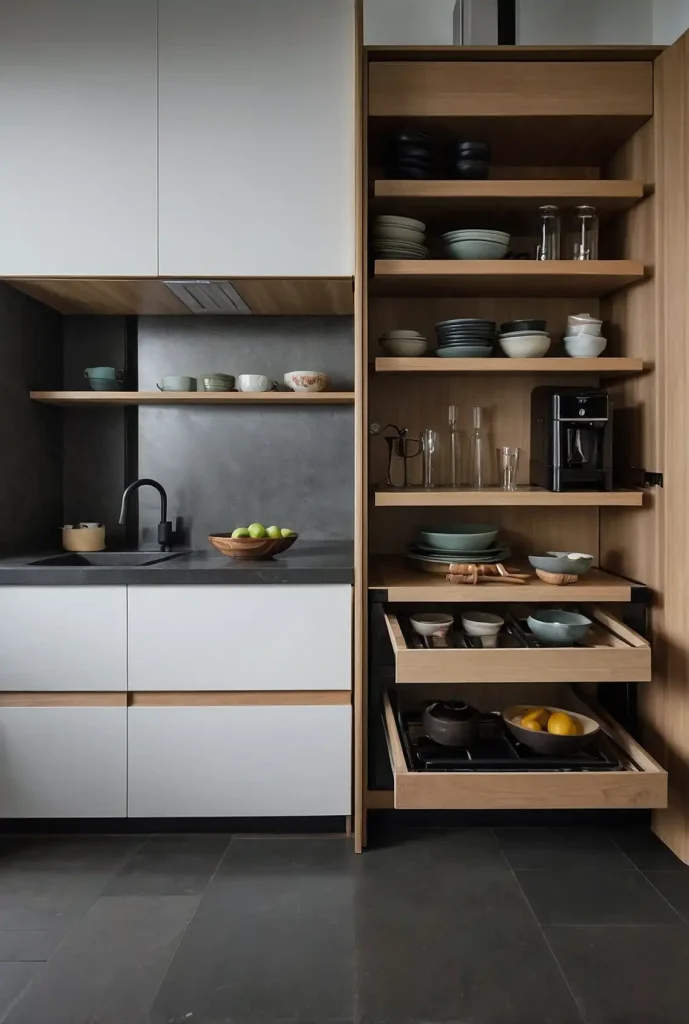
Conceal appliances behind matching cabinet panels for seamless integration. You’ll maintain clean lines while preserving modern functionality.
Choose panel-ready refrigerators, dishwashers, and microwaves. The hidden appliances reduce visual distractions in your space.
This approach creates a furniture-like appearance throughout. Your kitchen looks intentionally designed rather than appliance-focused.
8: Natural Wood Island
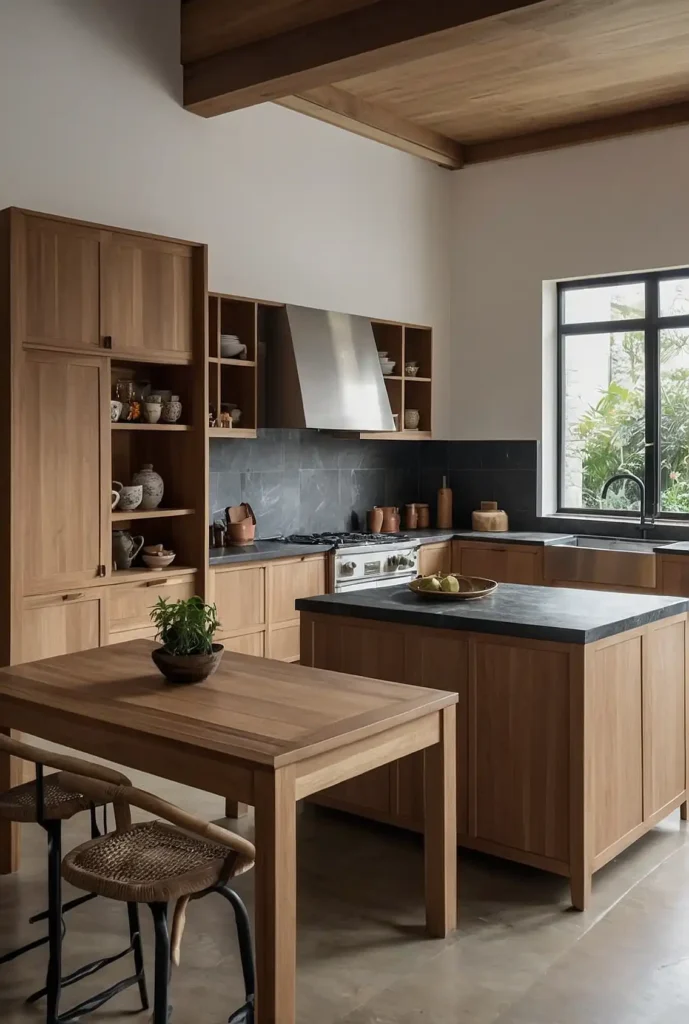
Install a kitchen island using reclaimed or live-edge wood. You’ll create a gathering place that celebrates natural material beauty.
Choose wood with interesting grain patterns and character marks. The organic shapes contrast beautifully with straight cabinet lines.
This centerpiece becomes both functional workspace and art. Your island grounds the entire kitchen design philosophy.
9: Simple Subway Backsplash
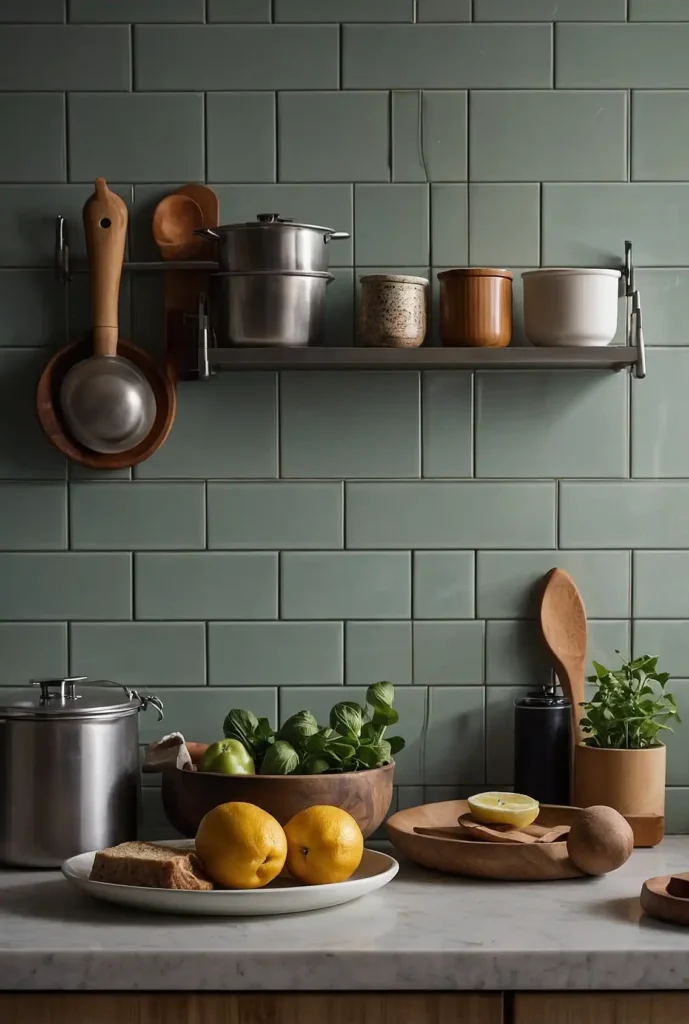
Install white subway tiles with minimal grout lines for clean simplicity. You’ll create timeless backdrop that never competes with other elements.
Choose large format tiles to minimize grout visibility. The classic pattern provides subtle texture without visual complexity.
This neutral foundation adapts to changing accessories easily. Your backsplash supports rather than dominates the design scheme.
10: Floor-to-Ceiling Storage
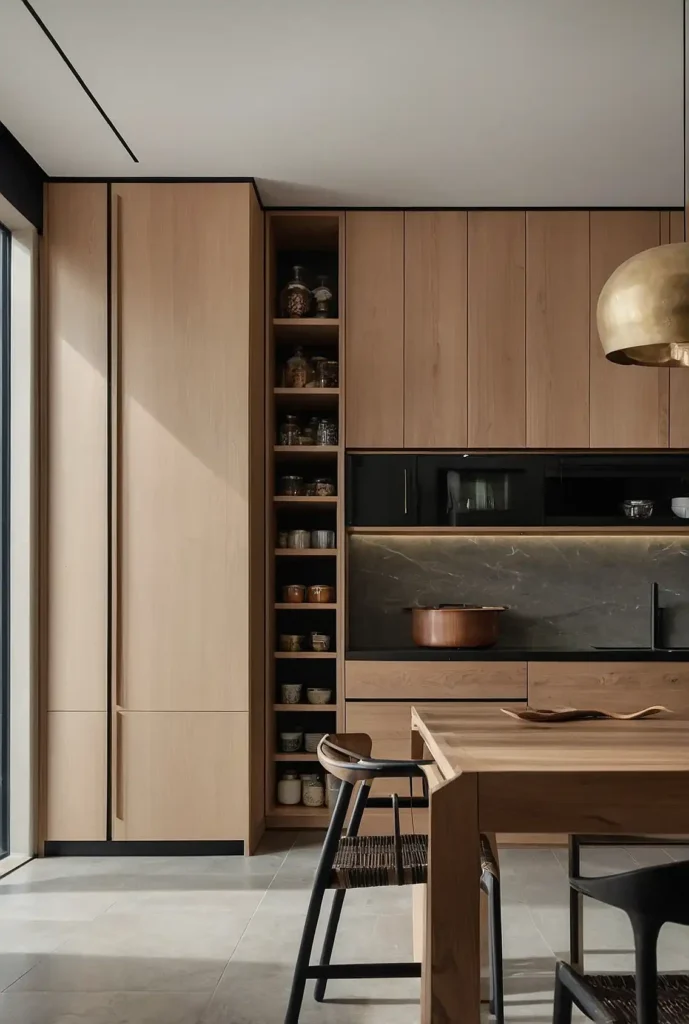
Design tall cabinets that reach the ceiling for maximum storage. You’ll eliminate visual breaks while creating impressive vertical lines.
Use identical cabinet doors throughout for cohesive appearance. The continuous lines make your ceiling appear higher naturally.
Access upper sections with quality step stools or ladders. This approach maximizes storage while maintaining minimalist aesthetics.
11: Integrated Sink Design
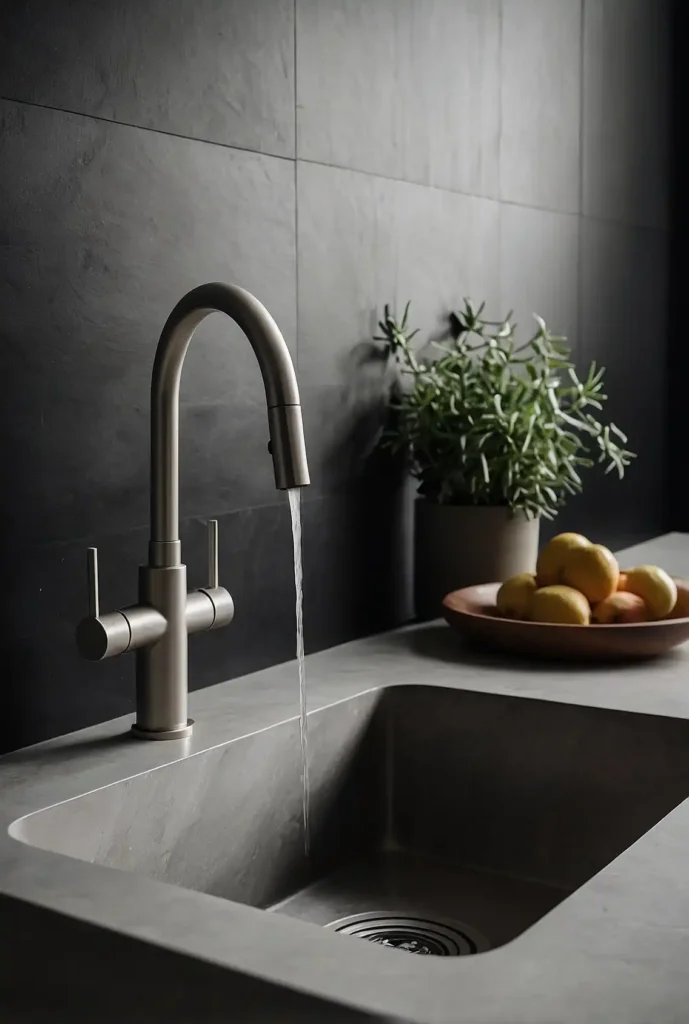
Choose undermount sinks with minimal reveal for seamless countertops. You’ll create continuous surfaces that feel calm and uncluttered.
Select sinks in matching or complementary materials. The integrated appearance reduces visual breaks in your workspace.
This detail contributes to overall design harmony significantly. Your sink becomes part of the countertop rather than separate element.
12: Bamboo Cutting Board Collection
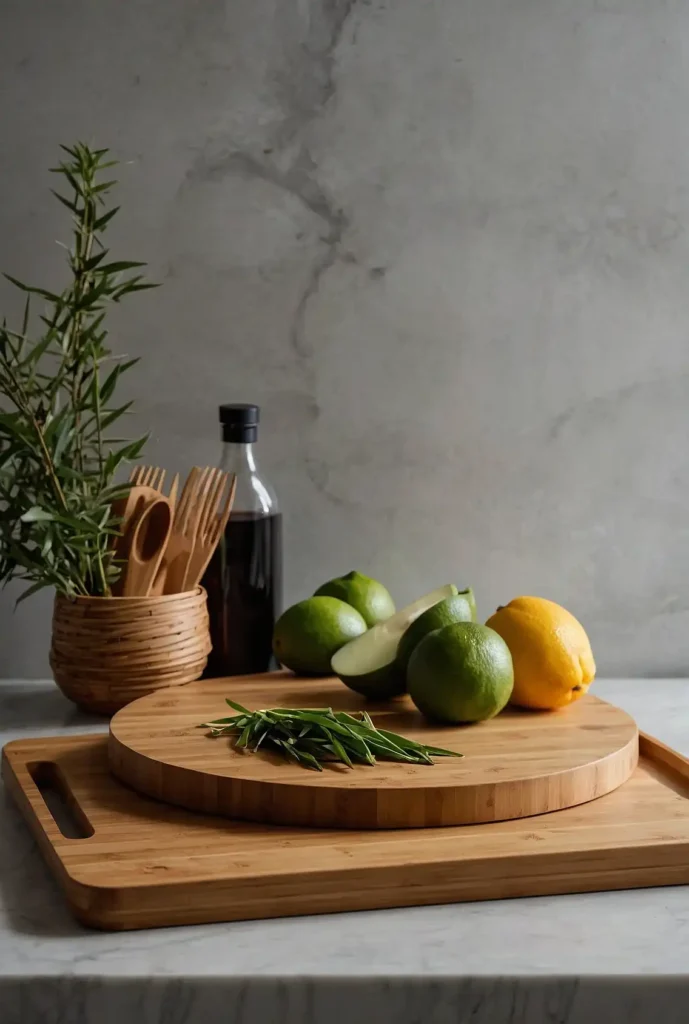
Display bamboo cutting boards as functional kitchen art. You’ll showcase sustainable materials while keeping essentials easily accessible.
Choose boards in various sizes with clean edges. The natural bamboo adds warmth against neutral backgrounds beautifully.
Store them vertically in dedicated slots or lean against backsplashes. These tools become decorative elements when not in use.
13: Ceramic Dishware Showcase
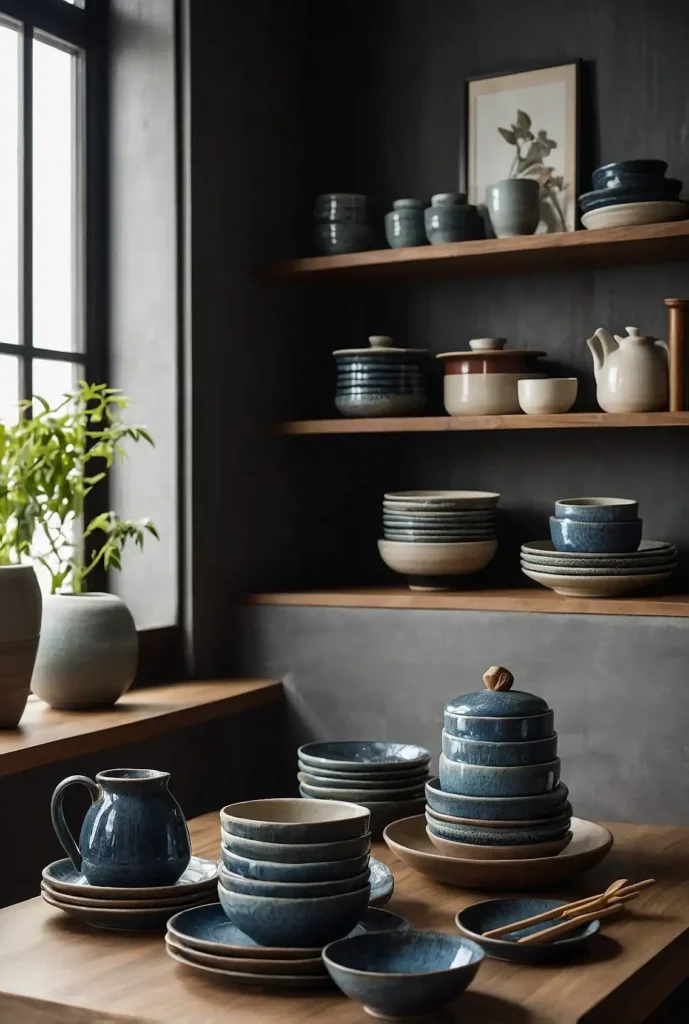
Curate a collection of handmade ceramic dishes in neutral tones. You’ll celebrate artisanal craftsmanship while maintaining color harmony.
Choose pieces with organic shapes and subtle imperfections. The handmade quality adds soul to your minimalist space.
Display them thoughtfully on open shelves with breathing room. Each piece deserves individual appreciation and space.
14: Natural Fiber Window Treatments
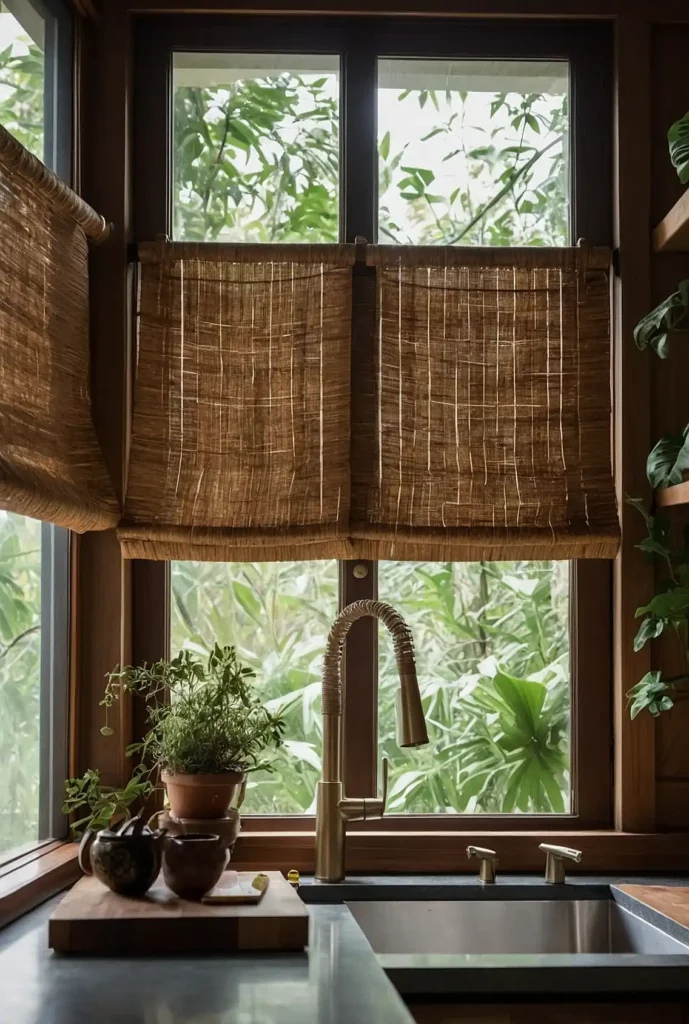
Install linen or cotton curtains in white or cream colors. You’ll filter light gently while adding soft texture to hard surfaces.
Choose simple panels without busy patterns or hardware. The natural fibers bring warmth to potentially cold modern kitchens.
These treatments provide privacy without blocking precious natural light. Your windows become framed views of nature.
15: Window Herb Garden
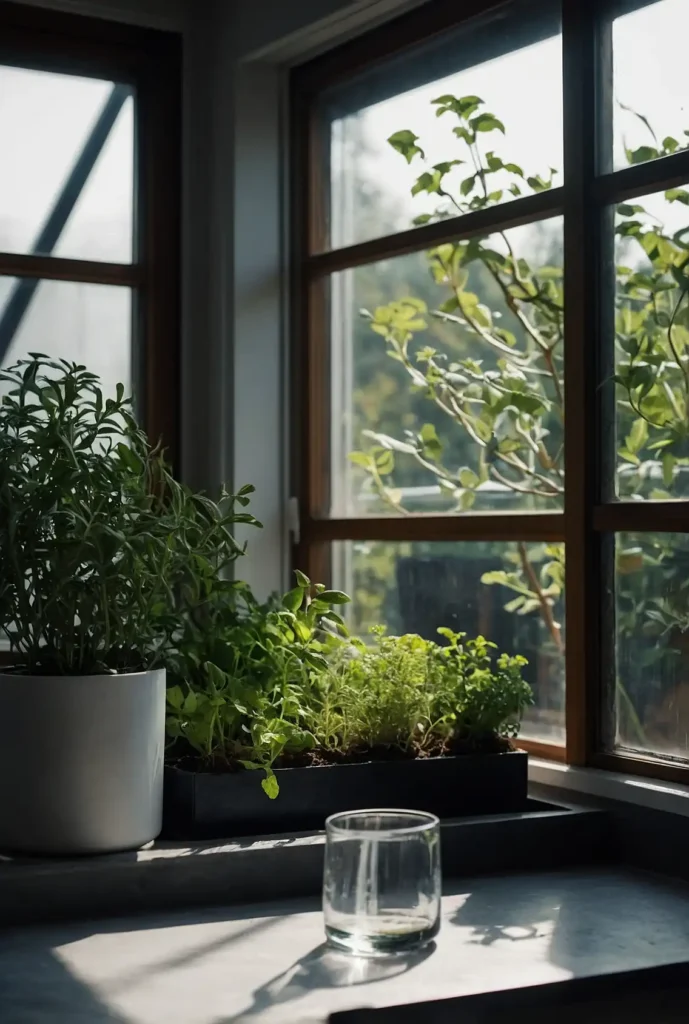
Create a small herb garden on your kitchen windowsill. You’ll bring nature indoors while providing fresh ingredients for cooking.
Choose simple ceramic or wooden planters in neutral colors. Herbs like basil, thyme, and mint thrive in sunny windows.
This living element connects your cooking with natural cycles. Fresh herbs elevate both your food and design aesthetics.
16: Clean Line Hardware
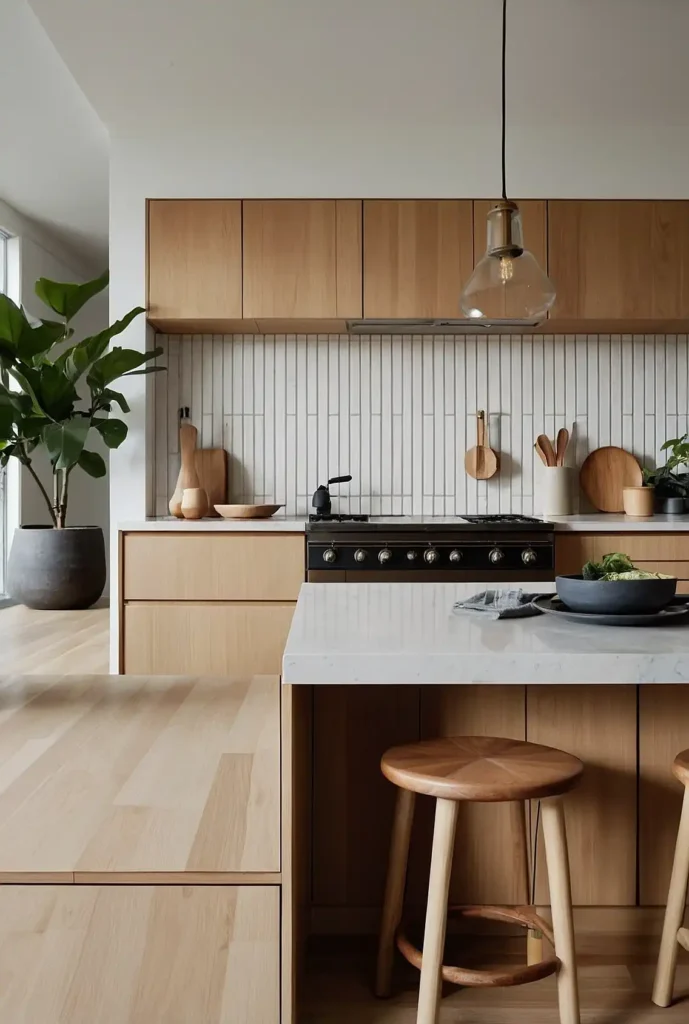
Select cabinet hardware with simple, geometric shapes in brushed finishes. You’ll add functional details without creating visual noise.
Choose pulls and knobs in consistent styles throughout. The minimal forms complement rather than compete with cabinet design.
Brushed nickel or brass finishes add subtle warmth. These small details contribute to overall design cohesion significantly.
17: Wooden Ceiling Beams
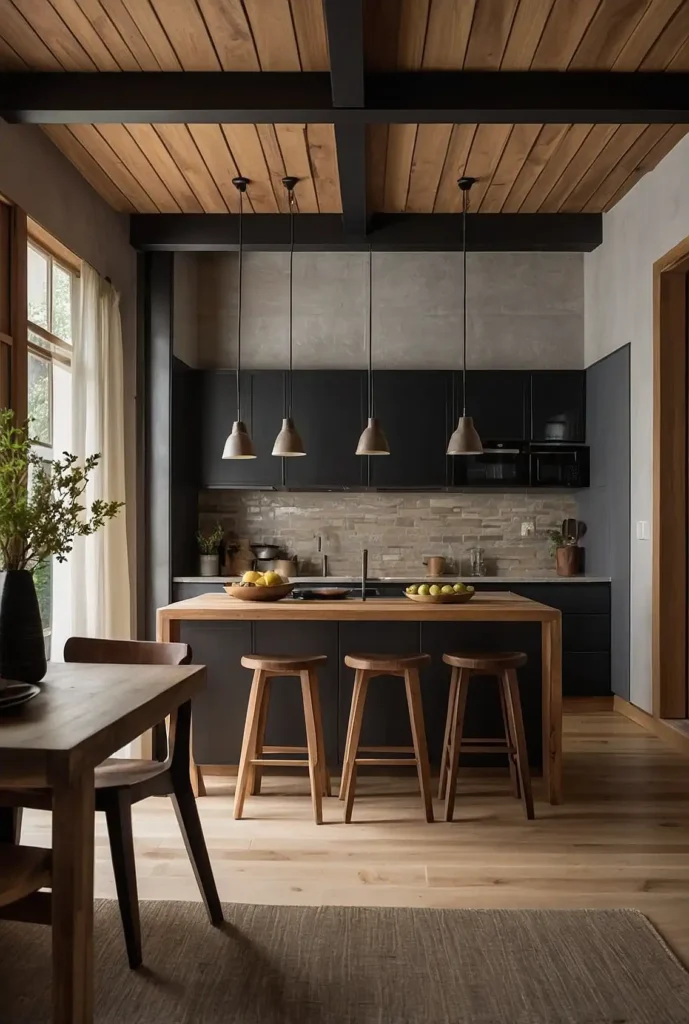
Install light wood ceiling beams for architectural interest and warmth. You’ll add Scandinavian character while maintaining clean lines.
Choose beams that complement your cabinet wood species. The overhead elements create visual rhythm throughout your space.
This feature adds texture without overwhelming minimalist principles. Your ceiling becomes an integral design element.
18: Natural Stone Flooring
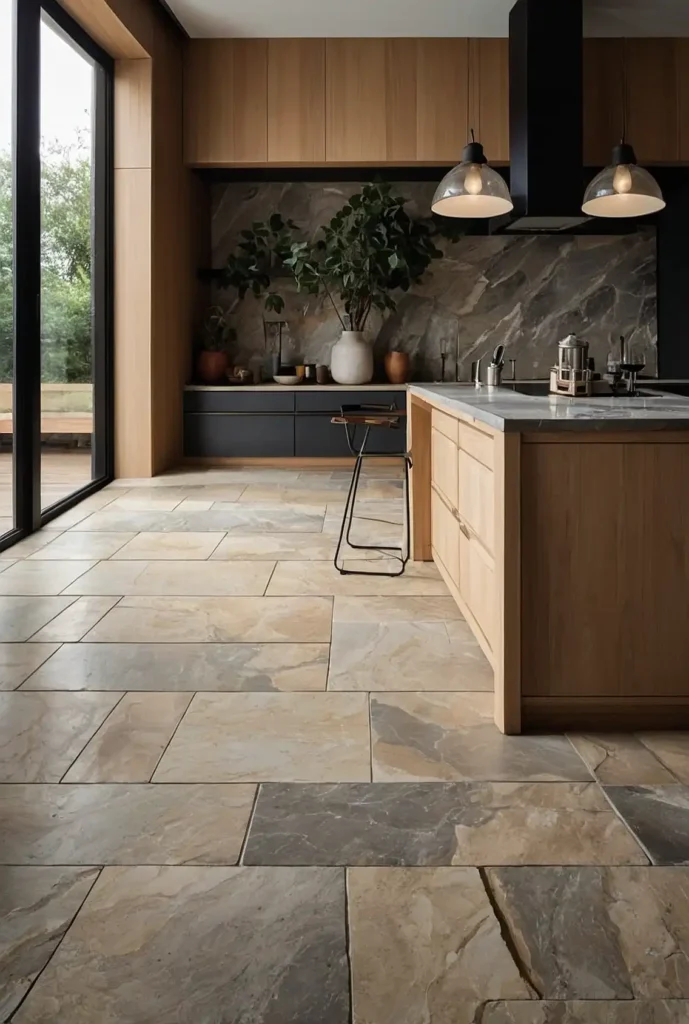
Choose light-colored stone or concrete floors for durability and beauty. You’ll create surfaces that age gracefully while supporting daily activities.
Select materials with subtle texture for slip resistance. The neutral colors provide perfect foundation for your design scheme.
These floors connect your kitchen with natural materials throughout. They handle spills and traffic while maintaining elegance.
19: Minimalist Bar Stools
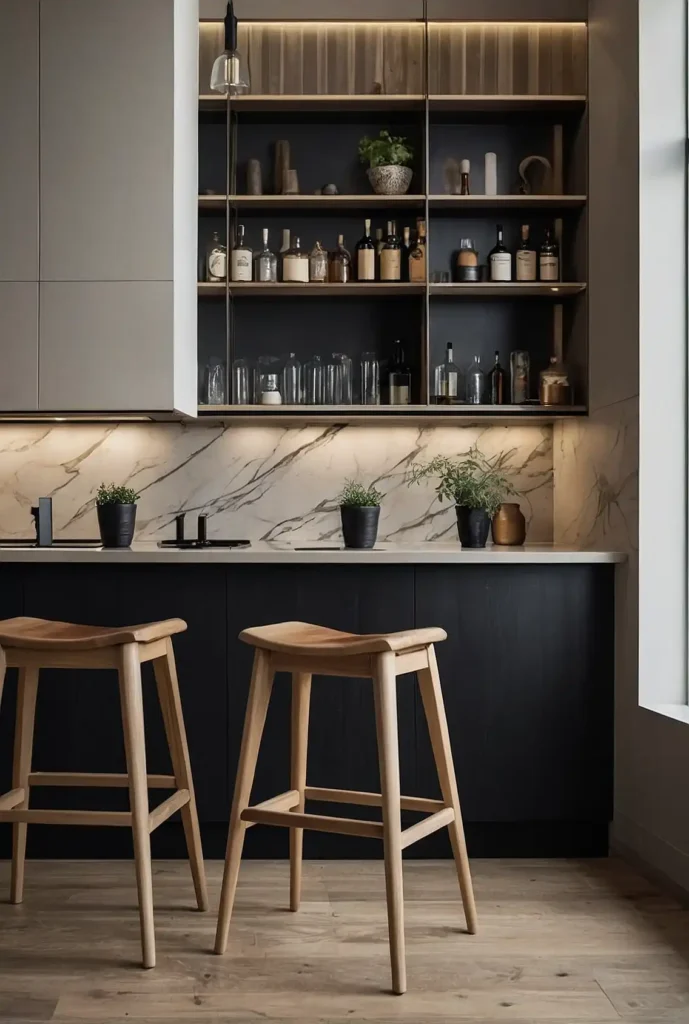
Select bar stools with clean lines and natural materials. You’ll provide seating that reinforces your design philosophy perfectly.
Choose wood or metal stools without excessive ornamentation. The simple forms create visual calm around your island.
Avoid busy patterns or bold colors completely. These seats should blend seamlessly with your overall aesthetic.
20: Hidden Pantry Storage
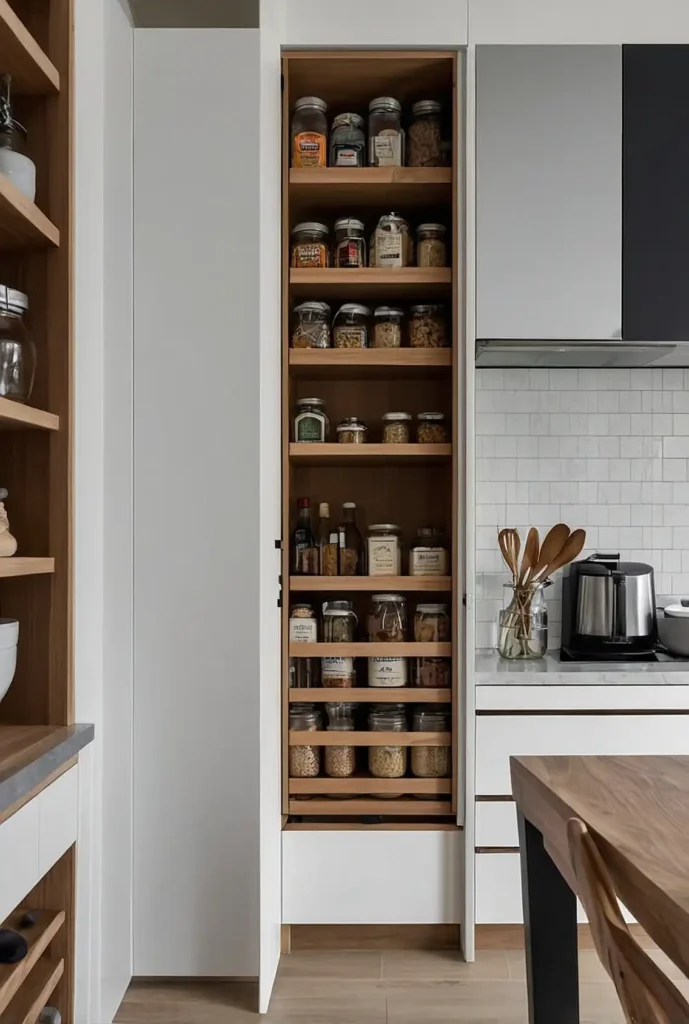
Design concealed pantry storage behind seamless cabinet doors. You’ll organize essentials while maintaining uncluttered visual surfaces.
Use interior organizers that maximize vertical space efficiently. The hidden storage keeps countertops clear and peaceful.
This approach encourages mindful grocery shopping and consumption. Your kitchen stays organized without visible storage containers.
21: Natural Light Maximization
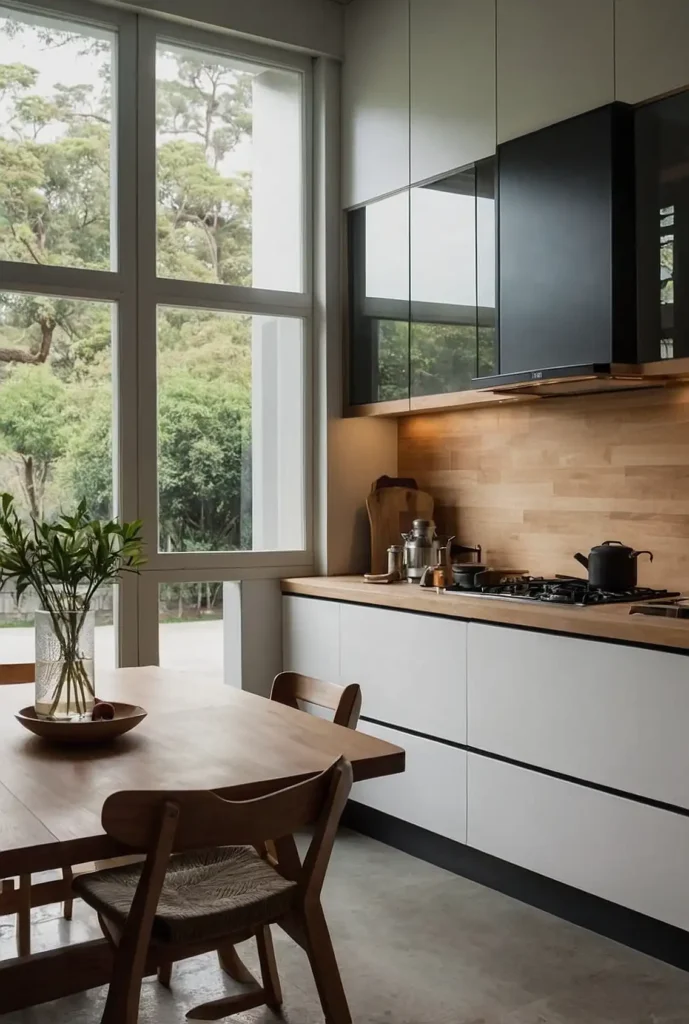
Design your layout to capture and distribute natural light. You’ll create bright, uplifting spaces that feel connected to outdoors.
Position work areas near windows for best illumination. Use light colors and reflective surfaces to bounce light throughout.
This connection with natural rhythms supports mindful living. Your kitchen follows the sun’s daily journey beautifully.
22: Simple Range Hood Design
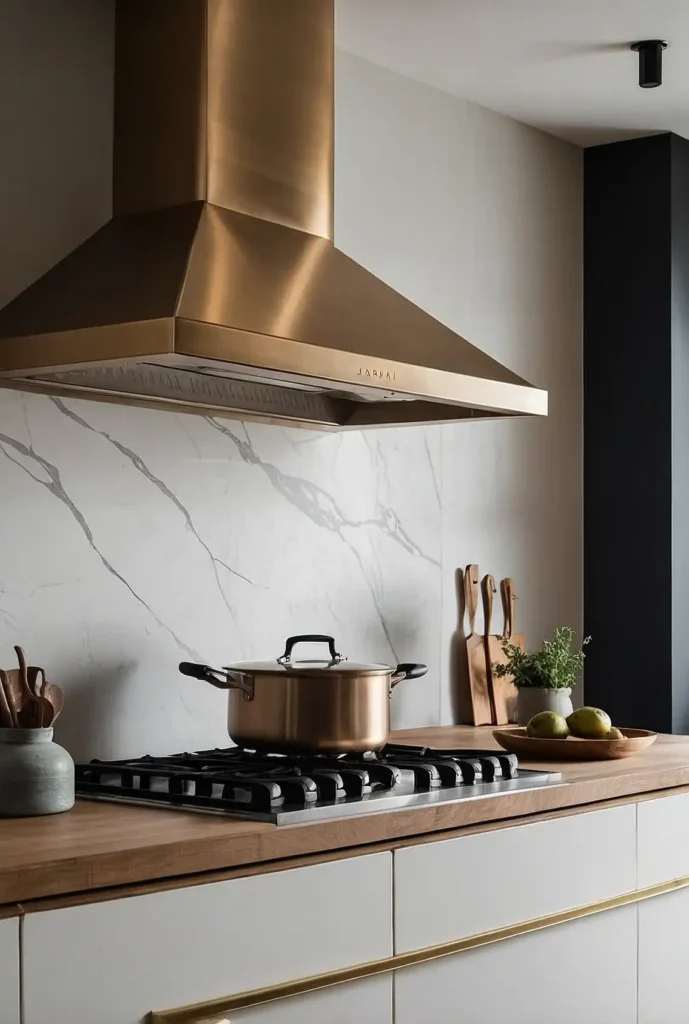
Choose a range hood with clean lines that blends seamlessly. You’ll maintain visual continuity while ensuring proper ventilation.
Select models that match your cabinet finish exactly. The integrated appearance preserves your minimalist aesthetic perfectly.
Avoid ornate or decorative hood styles completely. This functional element should disappear into your overall design.
23: Wooden Serving Accessories
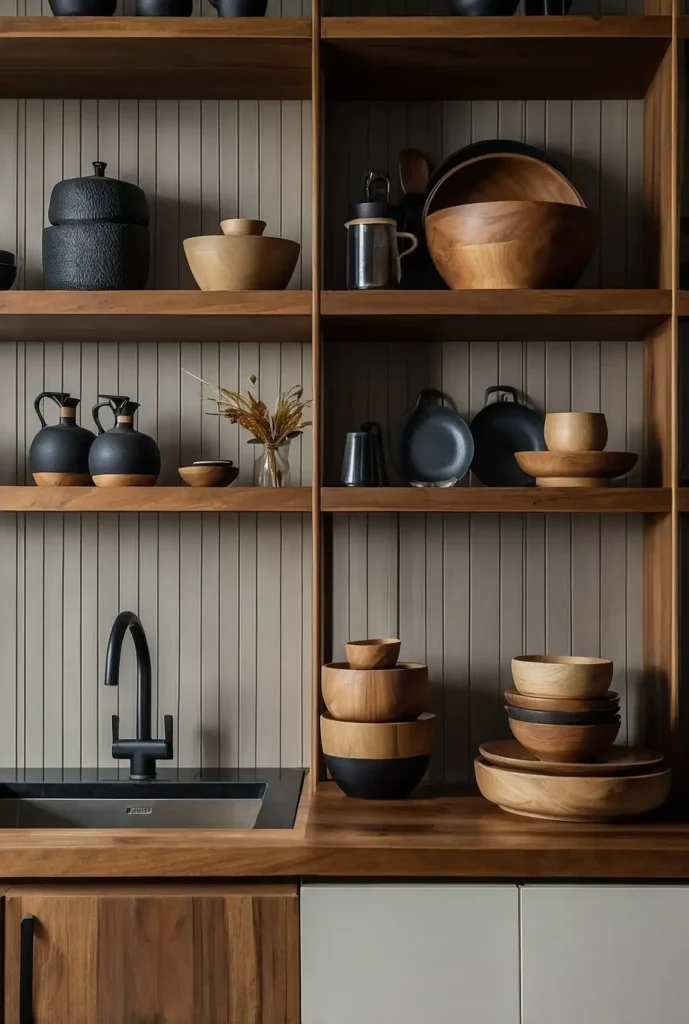
Display wooden serving trays, bowls, and utensils as functional decor. You’ll showcase natural materials while keeping essentials accessible.
Choose pieces with beautiful grain patterns and smooth finishes. The warm wood adds life to neutral color schemes.
Group them thoughtfully on counters or open shelves. These tools celebrate the beauty of everyday objects.
24: Handcrafted Pottery Display
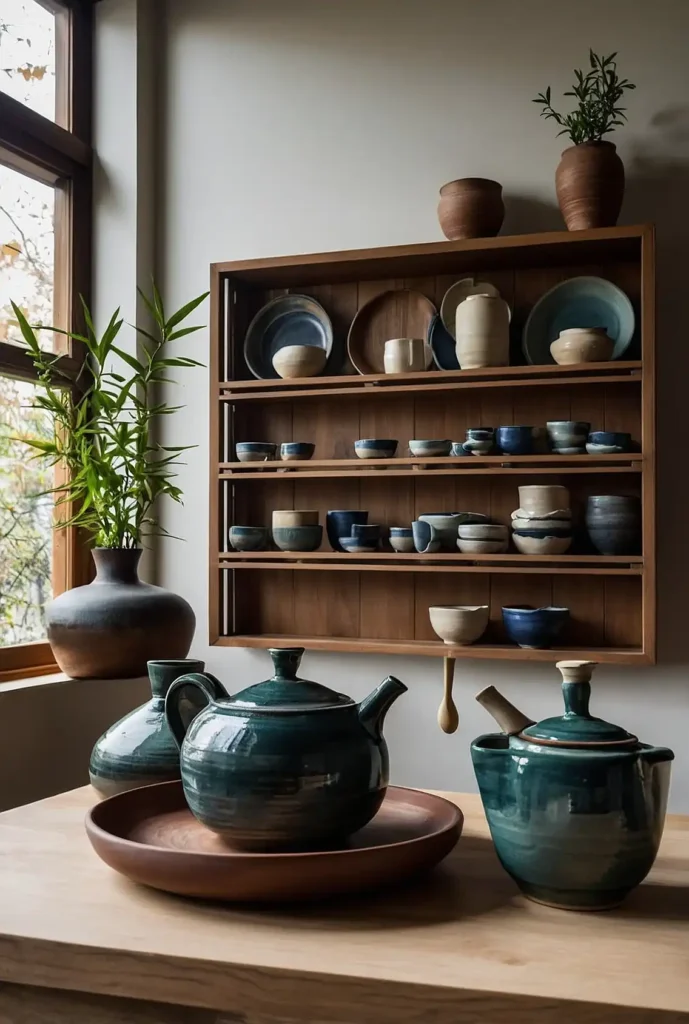
Showcase handmade pottery pieces as kitchen art and storage. You’ll celebrate artisanal craftsmanship while maintaining functional beauty.
Choose pieces in earth tones that complement your palette. The organic shapes add visual interest without creating clutter.
Use them for storing cooking utensils or displaying fruits. These functional art pieces serve multiple purposes beautifully.
25: Clean Countertop Styling
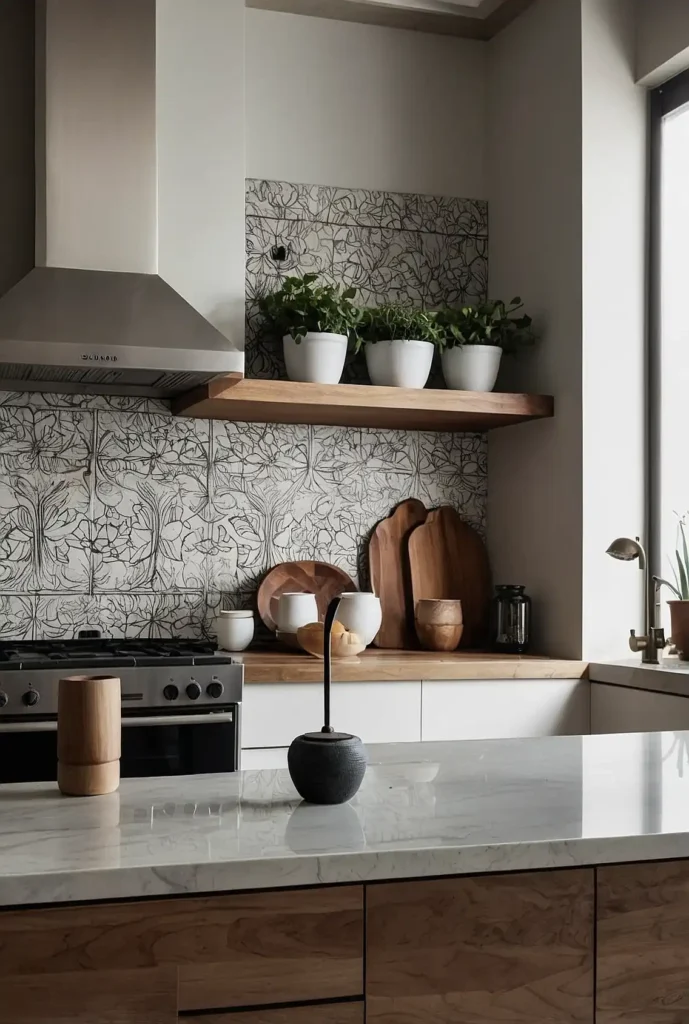
Keep countertops mostly clear with only essential items visible. You’ll create peaceful surfaces that promote mindful cooking practices.
Display one or two beautiful objects rather than many. Choose items that serve daily functions while adding beauty.
This discipline creates visual calm and easier cleaning. Your countertops become meditative spaces for food preparation.
26: Natural Fiber Area Rugs
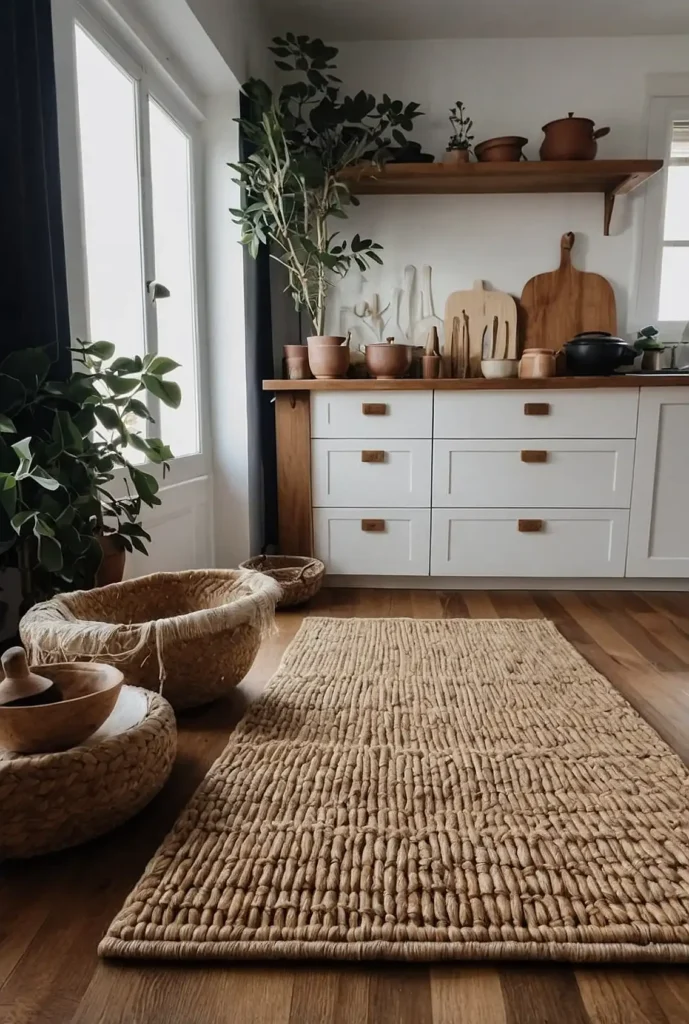
Add jute or hemp rugs for warmth and texture underfoot. You’ll soften hard surfaces while maintaining natural material consistency.
Choose rugs in neutral colors that complement your floors. The organic fibers add comfort without visual complexity.
Position them in front of sinks or cooking areas. These practical additions make standing more comfortable during long cooking sessions.
27: Zen Breakfast Nook
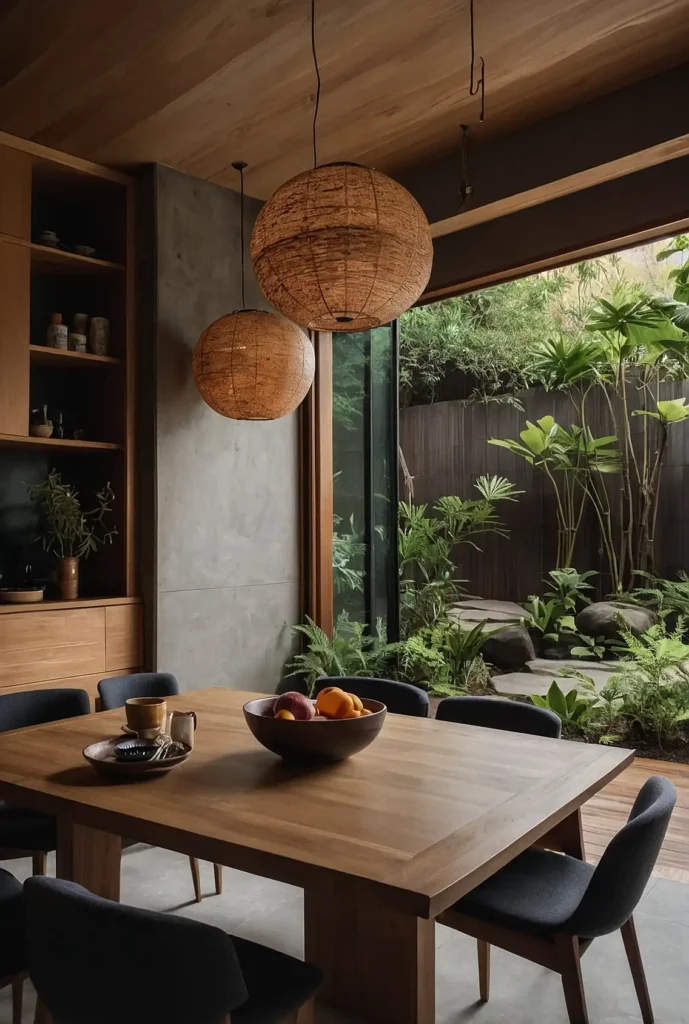
Create a simple eating area with built-in bench seating. You’ll establish a peaceful spot for morning coffee and contemplation.
Use the same materials as your kitchen cabinetry. Add simple cushions in natural fabrics for comfort and softness.
This quiet corner encourages mindful eating and connection. Your kitchen supports both cooking and peaceful gathering perfectly.
Conclusion
These Japandi kitchen ideas create spaces that nourish both body and soul. You’ll find peace in every cooking experience.

